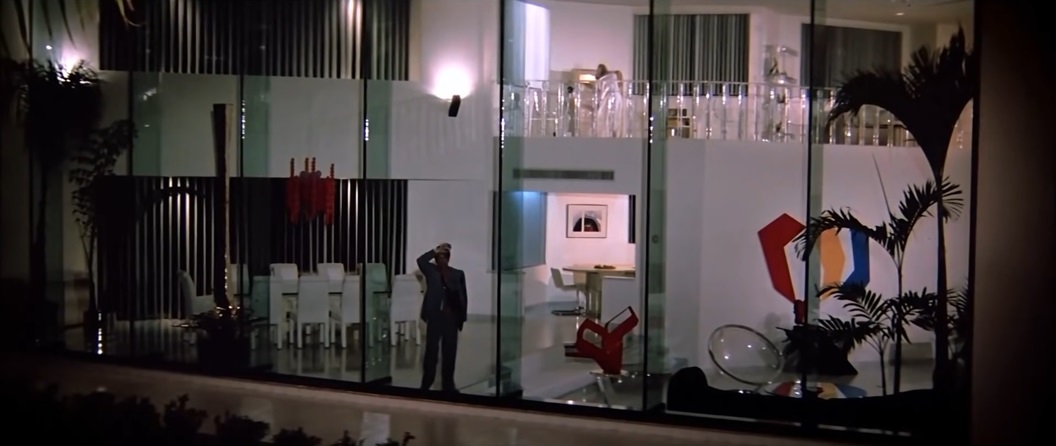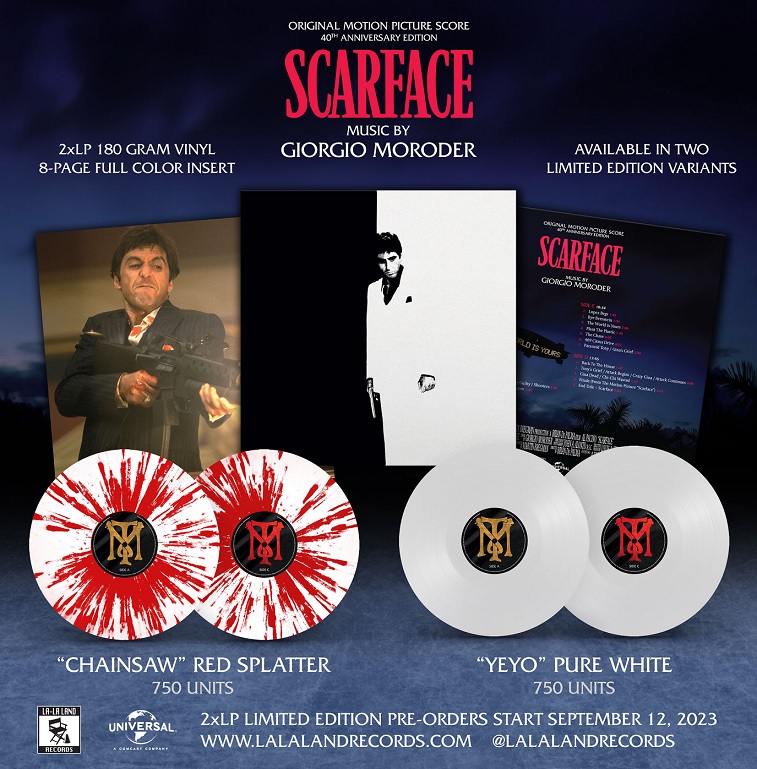STONE CONCEIVED AS "A GREAT CARRIBEAN EPIC, EXUBERANT, GLAMOROUS, EROTIC, FULL OF ENERGY, EXTRAVAGANCE & COLOR"

EL PAÍS' Miquel Echarri looks at Brian De Palma's Scarface as "the film that took 40 years to become a classic" -
[Oliver] Stone spent several weeks in the Latin neighborhoods of Miami, meeting with police officers and criminals, and the atmosphere drove him back into the old habit of snorting cocaine constantly. From there he moved with his wife to Paris, where he wrote the script “in one sitting and completely sober.” By then, he already conceived the film as “a great Caribbean epic, exuberant, glamorous, erotic, full of energy, extravagance and color.”When the man who was going to direct the film, Sidney Lumet, read the nearly 300 pages Stone had written, he resorted to the always useful argument of “creative differences” to dodge the bullet. Bregman tried to convince him, reminding him how well they had worked together in previous projects in which Pacino had also been involved, such as Serpico or Dog Day Afternoon, but it was no use. Lumet did not want to compromise his prestige by taking part in such nonsense, although he was gracious enough not to express his opinion in public.
Thus, Bregman turned to Brian De Palma, who was having trouble closing some financing deals after the box office failure of one of his most personal films, Blow Out (1981), and was willing, for once, to take on a commissioned film. At this point Robert De Niro had already rejected the role of Tony Montana. Glenn Close, Kim Basinger, Brooke Shields, Sharon Stone and a half-dozen other actresses had been considered for Elvira, the gangster’s lover, and Bregman had resigned himself to offering the role to an “icy and inexperienced” 24-year-old Michelle Pfeiffer.
Filming was a 24-week marathon between November 1982 and May 1983 that began in Los Angeles to then continue in San Diego and Santa Barbara, with a brief and almost clandestine trip to Miami, where some scenes were shot in spite of the fact that the city that had refused to host the film, starting with one of the most famous: the brutal dismemberment of Ángel, Montana’s first partner.
In March, Pacino suffered severe burns on his left hand when he accidentally grabbed the barrel of a gun that had just been fired. While he recovered in the hospital, De Palma took the opportunity to shoot a series of action scenes that did not require his presence. In one of them, the premature explosion of a bomb caused serious injuries to two specialists. However, the most prominent incident, which a Variety article presented as a supreme example of the level of frivolity and delirium that Hollywood productions were reaching at the time, was the damage that Pacino’s nasal passages suffered after inhaling the high quantities of baby laxative and powdered milk that served as cocaine during the filming of the almost continuous narcotic scenes.
Stone contributed, perhaps unintentionally, to the film’s dark legend. As he told the specialized website Creative Screenwriting, he felt trapped on the set, annoyed by the exasperating slowness caused by the constant interruptions, the neurotic perfectionism of a Brian De Palma that was obsessed with countless trivial details and the puzzling insecurity of Pacino, who insisted on repeating takes over and over. When the final scene was being filmed, that orgy of violence that De Palma conceived as an homage to Akira Kurosawa’s Throne of Blood (1957), Steven Spielberg paid a courtesy visit to the Santa Barbara set and insisted on lending a hand. De Palma commissioned him to direct the peculiar shot in which the killers first break into Tony Montana’s mansion.
In the end, the film survived various accidents and difficulties and arrived at the theaters on time. It had a notable performance in its first week, although it only grossed half as much as its great rival at the box office, Sudden Impact, the sequel to Dirty Harry directed by Clint Eastwood, another ultraviolent production reviled by the critics.
Scarface finished the season grossing a respectable but ultimately disappointing $45 million in the United States and $20 million worldwide. Profitability would come later, in a way that was unusual at the time: a quick release on VHS and Betamax in the summer of 1984 that made it the most rented film of the year, and the first to exceed 100,000 copies sold in home video format. Critic Gary Arnold described it as a guilty pleasure: you wouldn’t go see it at the daytime screening of a Times Square movie theater, but you are willing to rent it on the sly and enjoy it by yourself in the privacy of your home.
Today, no one seems to have much problem with it. Hollywood Insider considers it one of the ten best gangster films in history, on Quora they place it among the great classics of all time and its role as a great countercultural reference is barely questioned anymore. In Star Tribune, Gary Thompson remembers that some of the Oscar contenders in 1983 were Yentl, The Big Chill and Silkwood, three featherweights, and that the winner, Terms of Endearment, was not much better. The highest-grossing films of the year were Return of the Jedi and Octopussy. To that batch of harmless, almost immediately obsolete movies, Thompson opposes one of the films of the early 1980s that have aged best, Scarface, with its chainsaw slaughter, its giant mounds of cocaine and Pacino’s lost gaze as he insults left and right with a bizarre Cuban accent. It is difficult, for anyone who has seen it, to disagree with such a verdict.



















